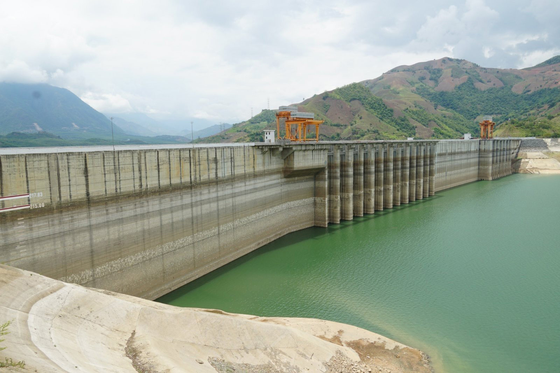 |
Son La Hydropower Plant |
It will possibly ensure a steady electricity supply, with an estimated load of approximately 421 million kWh per day.
On June 21, the Ministry of Industry and Trade announced that it had implemented the Prime Minister's directives regarding electricity supply during the dry season in 2023 and had taken prompt action to address the power shortage situation in June. The ministry has implemented various specific measures to conserve electricity, ensure the availability of coal and gas for power generation, actively introduce new power sources, monitor and prompt priority thermal power plants to resolve any operational issues in their units, and ensure a stable transmission capacity.
According to Mr. Tran Viet Hoa, Director of the Electricity Regulatory Authority of Vietnam, in recent days, the water inflow into hydropower reservoirs in the Northern region has improved. The water level of hydropower reservoirs such as Son La, Lai Chau, and Tuyen Quang has risen above the dead water level by 4-7 meters, while that of Lai Chau reservoir is approximately 15 meters above the dead water level. As the Northern region has entered the flood season, the water volume flowing into hydropower reservoirs is forecasted to continue to increase. This increase in water volume is expected to ensure the electricity supply with a calculated load of approximately 421 million kWh per day.
In the event of extreme conditions with no incoming floods, the Northern region can still rely on the remaining water volume in the reservoirs, along with natural water inflows, to meet the load demand. However, it will have an impact on the capacity to store water for emergency purposes.
In recent days, certain areas in Hanoi and the Northern provinces have experienced localized power outages, but they have been limited in scope and short in duration. Some scheduled power cuts were initially announced but later postponed or canceled. This situation is attributed to erratic weather conditions, resulting in fluctuating electricity demand and peak capacity differences by day. For instance, on June 19, the electricity production in the Northern region reached 383.1 million kWh, with a peak power capacity of 17,313 MW. However, on June 20, the electricity production increased to 405.9 million kWh, with a peak power capacity of 18,872 MW.
In the Central and Southern regions, electricity supply operations are currently secure, and there is no immediate requirement for oil-fired power generation. However, in cases of abnormally high or unforeseen increases in load demand or thermal power plant incidents, oil-fired power sources will be flexibly utilized to meet the demand.
Vietnam Electricity Group has recently held a conference with 24 investors of coal-fired thermal power plants in the Northern region. They have been requested to ensure the operational readiness of their power units, with a particular focus on addressing any incidents that may arise. The investors are also urged to proactively arrange an adequate fuel supply to meet the high demand for power generation and fulfill the electricity consumption needs of people in the last six months of 2023.
























